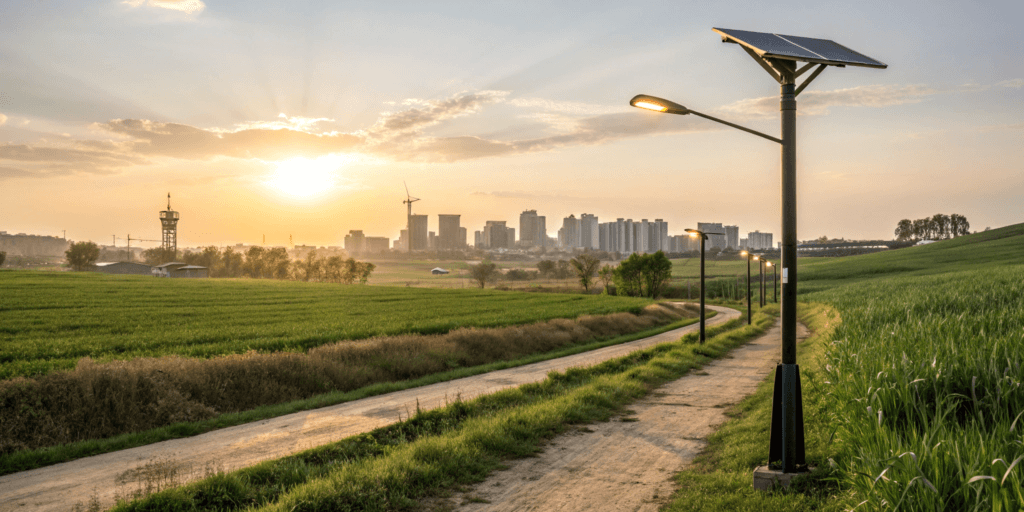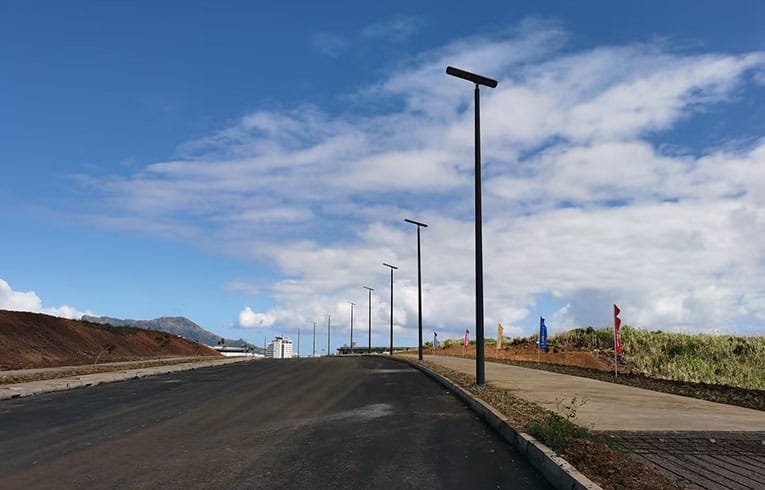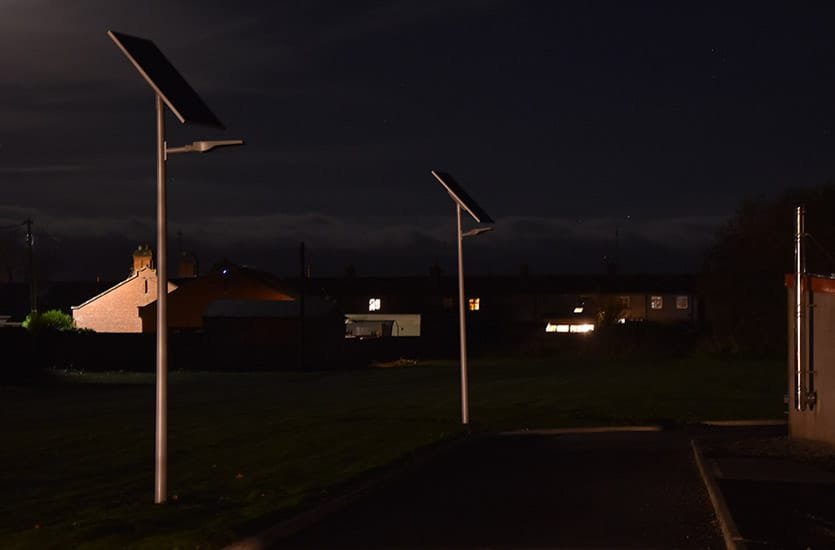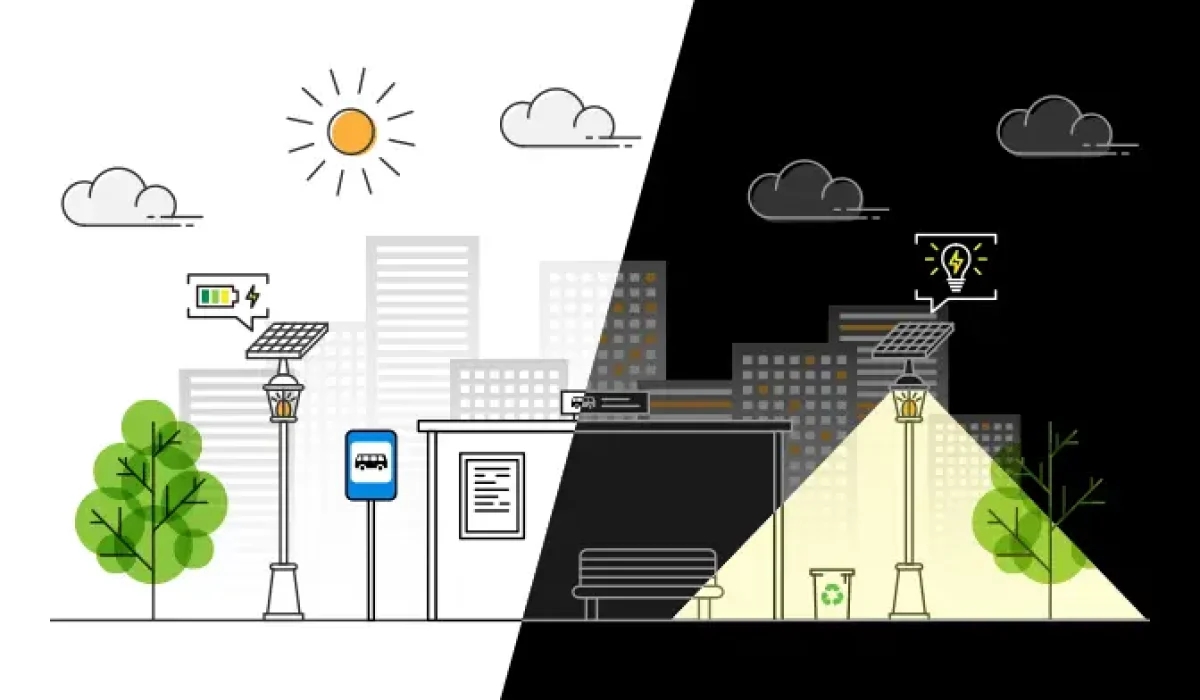When I first started working on solar street lighting projects in Africa, I had the same doubt many people have: "Will these lights really last as long as promised, or will they turn into another maintenance nightmare?"
Solar street lights can actually work for 10 to 20 years or even longer — but that only happens if every component is chosen well, installed correctly, and looked after with care. Knowing how each part ages can save you big headaches later.
Many clients have shared stories with me — some good, some frustrating. From these experiences, I’ve learned how to make solar lights last and when to watch out for common pitfalls.
What is the durability of solar lights?
I remember my first large government project in Uganda. It was a small town, and they wanted to replace all their grid-powered street lights with solar. The biggest worry wasn’t price; it was whether the lights would hold up under heavy rain and strong winds.
Well-made solar lights can stand up to harsh weather, heavy rains, and scorching heat for over 20 years if built with good materials and properly maintained.
Most people think solar lights are fragile, but it’s actually the opposite. With strong poles, quality batteries, and good LEDs, they become one of the toughest lighting solutions. But the trick is not just buying the most expensive model — it’s about understanding the parts.

Dive deeper: What really keeps them durable?
Durability depends on how each component works together. The solar panel collects energy, the battery stores it, the LED light turns it into illumination, and the controller manages charging and discharging. If one fails, the whole system suffers.
From my experience, the weakest link is often the battery. Many companies cut costs by using smaller or cheaper batteries. I remember one project where the contractor insisted on a lower-cost battery to win the bid. Within two years, more than half the lights stopped working. That taught me the hard way: never compromise on battery quality.
I always encourage clients to ask suppliers about IP ratings for water and dust resistance. In dusty or coastal areas, poor sealing leads to rust and electronic failures. The poles are another critical piece. In Uganda’s humid environment, even a small scratch can start rusting fast. I’ve had to repaint poles myself to save costs for local partners.
Overall, real durability isn’t just about years — it’s about peace of mind. When I visit a site after five years and see the lights still shining bright, I know we did it right.
Why do some solar lights fail after a year?
I’ve heard it many times: "We bought solar lights last year, and they already died!" It's frustrating and makes people doubt the whole technology.
Most early failures come from cheap batteries, poor design, bad installation, or neglecting simple maintenance.
I once worked with a local trader in Ghana who bought lights from a new supplier because they were 20% cheaper. After just one rainy season, more than a third failed. When we inspected, we found that the battery boxes weren’t sealed, and water had destroyed the circuits.
Dive deeper: Why do batteries fail so quickly?
Batteries face the most stress in a solar system. Every day they charge and discharge, and if they're not big enough or not properly managed, they die early.

For example, gel batteries can last up to 8 years, but only if they’re not deeply discharged too often. In practice, many systems draw too much power at night, pushing batteries beyond safe levels.
Another common problem is the controller. A good controller stops the battery from overcharging and going too low. I once saw a system where the installer skipped using a proper controller to save money. Within a year, the batteries puffed up like balloons and had to be thrown away.
Regular cleaning also matters more than people think. Dusty panels produce less energy, forcing batteries to work harder. A client in Togo was surprised when I suggested washing panels monthly, but after trying it, their night lighting time increased by over an hour.
When these points are ignored, even the best panels or LEDs can’t save the system. That’s why, in my projects, I insist on thorough training for local teams. If people know how to maintain the lights, they last longer and save huge costs.
Should you replace batteries or the whole system?
This is one of the most common questions I hear: "When the light gets dim, do I change the whole system or just the battery?"
In most cases, replacing the battery is enough and much cheaper than replacing the entire light.
- Lithium batteries usually last 3–5 years.
- Gel batteries can go for 6–8 years or longer with proper care.
Dive deeper: How do you decide?
Changing just the battery makes sense when the rest of the system is still good. I helped a client in Nigeria upgrade over 300 lights. We kept the panels, LEDs, and poles, and just replaced the old batteries. The lights came back to life, and we saved nearly 60% compared to a full replacement.
When deciding, first check each part:
- If the panel is still delivering enough power (check with a simple voltage test), keep it.
- If the LED is still bright, it can often last another few years.
- Poles rarely fail unless they are rusted through.
Another tip: always go for original battery specs or better. Don’t downgrade. Some traders try to cut costs by installing lower-capacity batteries, which might work at first but fail quickly.
I usually keep a small stock of spare batteries in my warehouse, so local partners can react fast if lights start dimming. That way, we avoid system downtime and keep streets safe.
This approach doesn’t just save money. It builds trust. When local communities see that their street lights come back brighter with just a battery swap, they believe in the system again. This is why I always recommend working with partners who can supply spare parts and support, rather than just pushing full replacements.
Lifespans of Solar Street Light Components?

The lifespan of each part is different. Let me break it down clearly from my years of fieldwork.
| Component | Typical Lifespan | Tips for Longer Life |
|---|---|---|
| Solar Panels | ~20 years | Clean often, avoid shading. |
| LED Lights | ~10 years (50,000 hours) | Keep cool, avoid moisture. |
| Poles | ~15 years | Repaint, check for rust. |
| Batteries | Gel: 6–8 yrs; Li: 3–5 yrs | Right size, avoid deep drain. |
| Controllers | 5–6 years | Use IP-rated units. |
Dive deeper: Real-world lessons for each part
Solar Panels
Panels are the workhorses. I’ve seen some panels over 15 years old still producing good power. But in places with heavy dust, like rural roads in Nigeria, panels can lose up to 30% efficiency if not cleaned. I’ve worked with municipal teams to set up local cleaning crews — this created jobs and protected the panels.
LED Lights
LEDs last long but are sensitive to heat. We had one project in Ghana where cheap, non-sealed fixtures let in moisture, and LEDs failed within two years. Always choose well-sealed, heat-dissipating designs.
Poles
Galvanized steel poles resist rust better. In coastal areas, I sometimes recommend aluminum poles even if they cost more upfront because salt corrosion destroys steel fast.
Batteries
I keep saying this, but it’s worth repeating: batteries are the heart. Oversize them a little. It costs more in the beginning but saves huge in replacements and maintenance.
Controllers
Cheap controllers save money once, but replacing them every year is painful and expensive. In Togo, I saw an entire city block go dark because of controller failures after heavy rain. It took weeks to fix because spare parts were missing.
What factors shorten or extend lifespan?

Many people focus only on price, but a cheap system often costs more in the long run.
Dive deeper: The small things that make a big difference
When I walk through client sites, I look at small details: are the panels tilted correctly? Are wires exposed? Are battery boxes sealed? Many problems start here.
Another factor is local environment. In hot areas, battery life is shorter. In coastal zones, rust is a big enemy. In dusty villages, cleaning becomes critical.
Regular maintenance is simple but powerful:
- Monthly panel cleaning.
- Quarterly battery checks.
- Yearly pole inspections.
Good installation is everything. A crooked pole might look funny at first but can cause cracks and leaks in the future. I always train local installers and sometimes stay on-site for days to guide the first few installations. This might slow things down at first but saves big money and headaches later.
Clients who follow maintenance schedules usually don’t call me with emergencies. Those who skip it often spend double in the end. Trust me — it’s worth the effort.
Conclusion
Solar street lights can shine for 10 to 20 years if we choose quality parts and take care of them. Batteries will need to be swapped out, but it’s far cheaper than replacing entire systems. In my experience, when everything is done right, these lights don’t just save energy — they help build safer, brighter, and more reliable communities.


